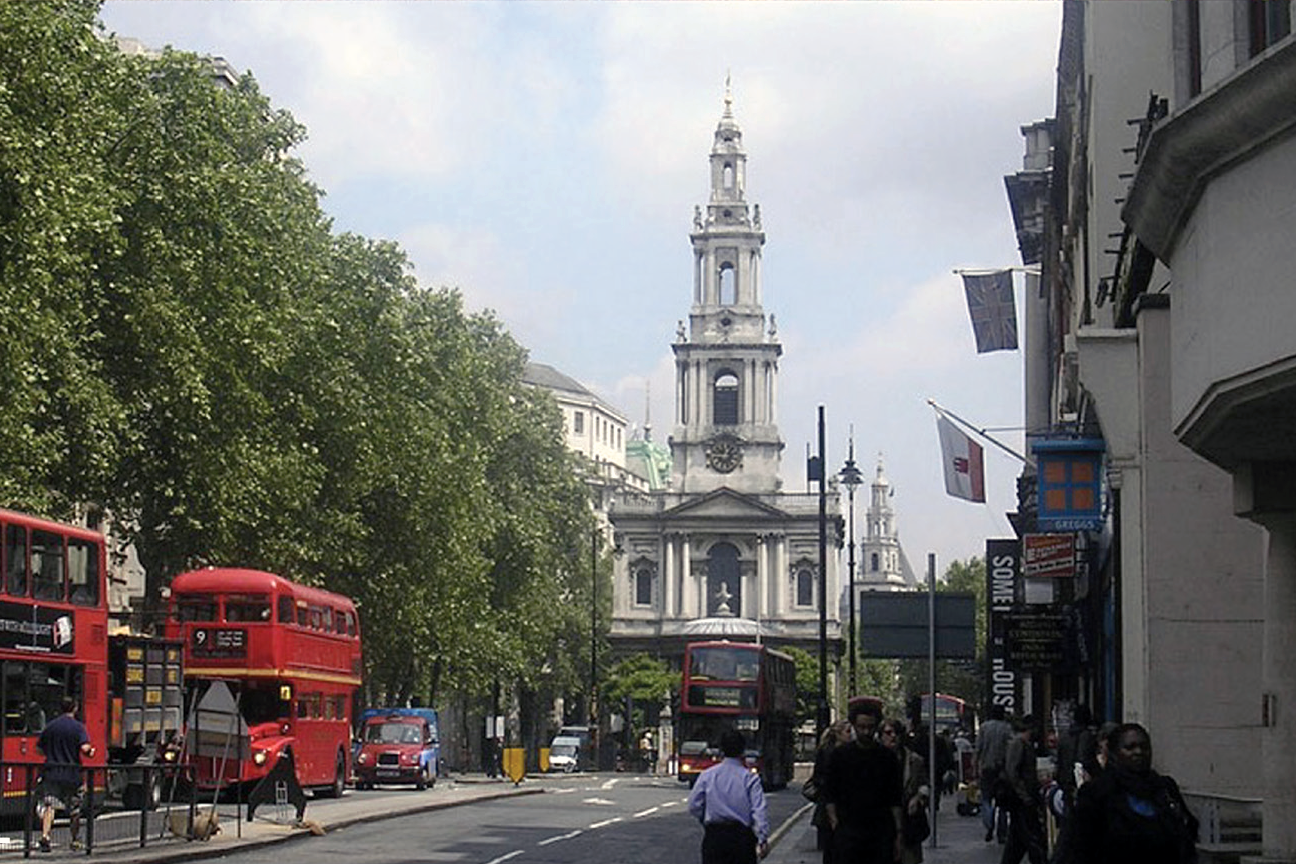Repost from Courtauld Digital Media: Epstein’s Strand Statues
Posted in 1900-1909, 20th Century, Architecture, contemporary, Public art, Sculpture, Strandlines and tagged with British Medical Association, controversy, Epstein, iconoclasm, look up, Lost Strand, public art
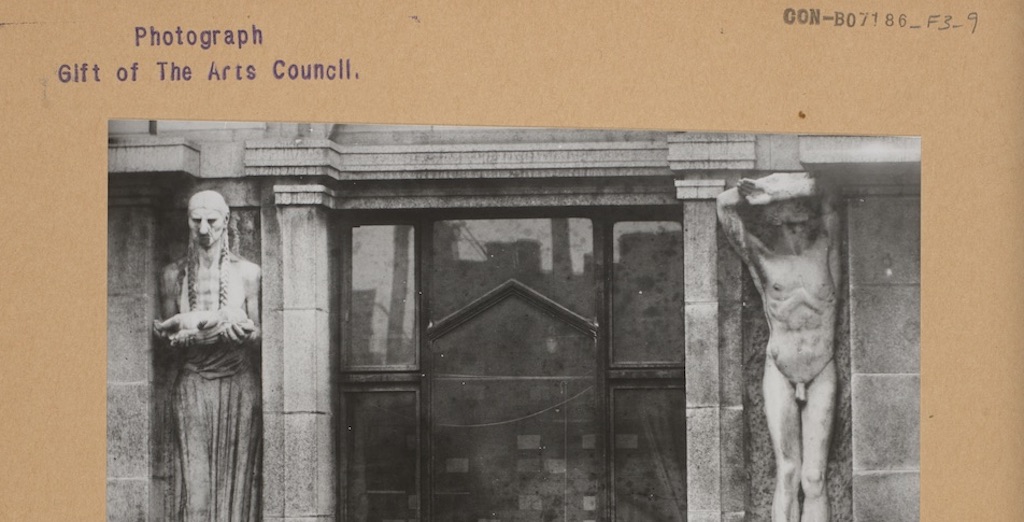
Editors’ note: The Strandlines editors are always scouring for news and research about the Strand area. Below we’re delighted to be sharing an extract from ‘The Strand Statues’, a piece by Leonora Monson, a Courtauld Connects Digitisation Placement student. Thank you to the Courtauld Digitisation team for allowing us to share.
The Courtauld Connects Digitisation project – part-funded by the National Lottery Heritage Fund – will make available online over 1.6 million photographs from the Courtauld’s Conway, Laib, and Kersting collections, free for non-commercial use. Find out more about the project here.
The Strand Statues
by Leonora Monson
The life and legacy of British-American sculptor and artist Jacob Epstein (1880-1959) remains a source of divisive and heated debate. Hailed by some as a central yet unappreciated pioneer in 20th-century British sculpture, whilst for others, the invigoratingly “modern” dynamic to his works are the markers of an iconoclast who wreaked havoc on traditional art. He is, therefore, an individual whose work demands sensitive analysis both for its significance in the historical context in which it was born and for its importance in the present day.
In the depths of the Conway Library, at the Courtauld Institute of Art, exist a series of photographs that encapsulate these divided opinions which shaped Epstein’s life as well as his artistic legacy. The photographs are of Epstein’s eighteen nude statues installed on the facade of the British Medical Association (BMA) headquarters on the Strand in London in 1908. These were depictions of archetypal subjects including, among others, primal energy, academic research, maternity, infancy and Hygieia.
The statues provoked considerable controversy for their supposed indecency, they were condemned by several religious figures as overtly sexualised and morally obscene, and their appearance labelled by others as ugly and deformed, leading to campaigns for the BMA to have them removed.
After a sustained public defamation campaign led by The Evening Standard and St James Gazette, despite the BMA’s support for maintaining the statues, in 1937 the mutilation of the figures went ahead after an incident led to their designation as a danger to pedestrians. All protruding sections of the figures – including faces, shoulders, genitalia, legs, arms, and feet – were chiselled away and the statues left in the largely mutilated form that we see them today at Zimbabwe House, formerly the BMA building.
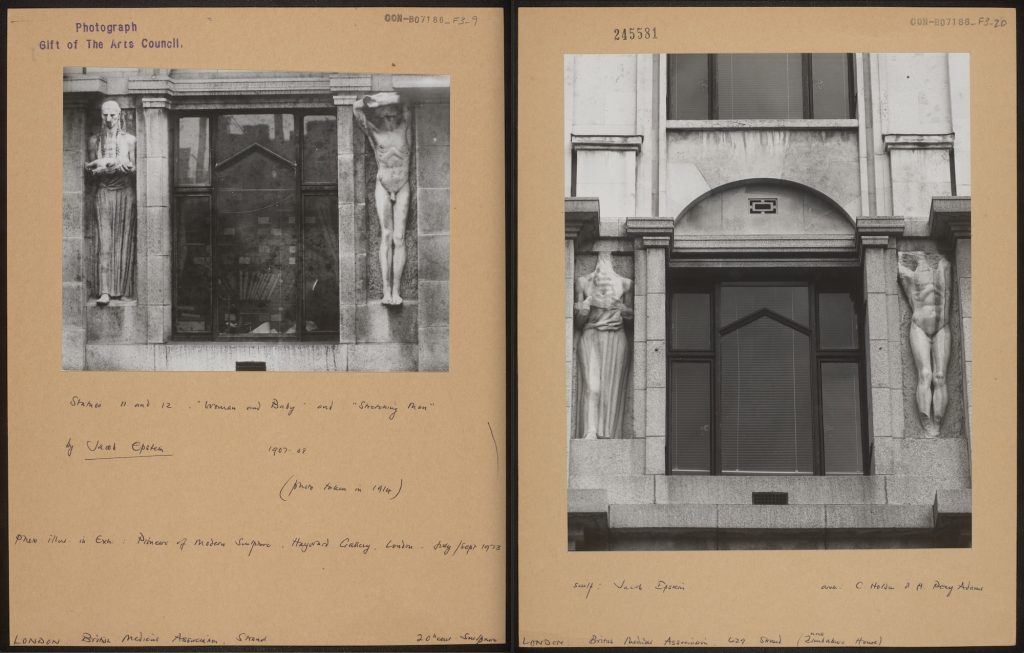
Left: The statues in situ on the Strand before 1937 (CON_B07186_F003_009). Right: The same statues after 1937 (CON_B07186_F003_020). The Courtauld Institute of Art. CC-BY-NC
It is hard to comprehend that a collection of sculptures that faced such intense public scrutiny and uproar at its conception, now quietly exists, often unnoticed by pedestrians on one of the busiest streets in London.
I am one such guilty Londoner, having walked down the Strand on a regular basis yet ignorant of these statues and their significance, until my time on the Digitisation Programme at the Courtauld.
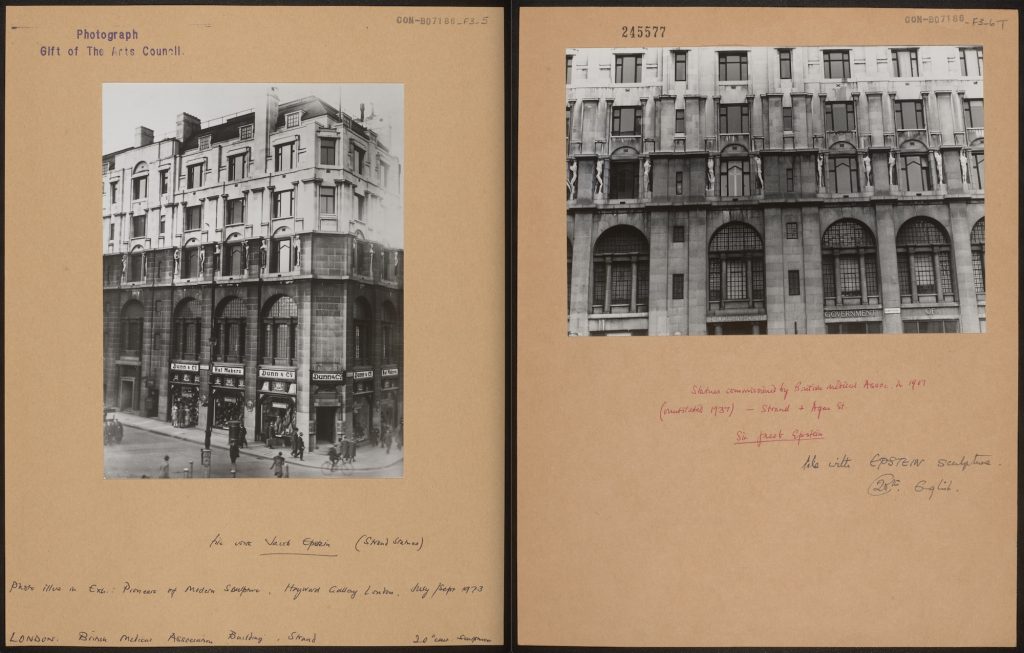
Left: View of the BMA building on the corner of the Strand (CON_B07186_F003_005). Right: The statues after 1937 (CON_B07186_F003_006). The Courtauld Institute of Art. CC-BY-NC.
The Courtauld’s collection of photographs provide a unique insight into the lifespan of the statues. The collection includes black and white photographs of casts of the statues rejected in Epstein’s initial proposal to the BMA along with those that were accepted, the statues in situ before and after their mutilation in 1937 and surviving individual fragments.
Particularly thought-provoking are the Courtauld’s photographs of the nudes of a young woman posing as Maternity; an old woman cradling a baby, depicting Infancy; and Matter, represented by a man grasping a rock marked with the outline of a foetus. To me, Epstein was remarkably sensitive in his depiction of the tenderness of human relationships across the boundaries of age and gender, whilst impressive in his candid approach to the changing physical form of the human body. Indeed, his sculptural depiction of the physically changing form of the female body across different stages in life, be it age or after pregnancy, is a breath of fresh air on a street now filled with billboards boasting a narrow ideal of what “femininity” should look like.
Whilst all such statues remain physically in situ, the depictions of children, be it the foetus in “Matter” or the new-born in “Infancy”, were physically removed from their original and complete sculptural form. The authorities were making it clear: Epstein in his candid depiction of the naked human body was threatening Edwardian sensibilities regarding the sanctity of motherhood and purity of childhood.The old woman’s sagging breasts and withered flesh, and the man’s full-frontal nakedness, were central in the early-20th-century campaign against the figures, whilst they equally informed public perception of Epstein’s subsequent projects. The rest of his career was tainted with the persistent criticism that his sculptures dangerously challenged contemporary ideals surrounding beauty and sexual propriety.
The Conway Library also contains photographs of alternative casts in Epstein’s workshop that were later destroyed after rejection by the architects in 1908, including a nude of a woman holding a leaf, posing as Nature. Her open stance and unashamed nakedness were evidently seen as too shocking in the initial choice of statues to be erected on the Strand. Through the images in the Library we gain an insight into the logic behind the initial choice of figures chosen, supposedly more appropriate than several of their workshop contemporaries, and crucial photographic evidence of physical casts that no longer exist.
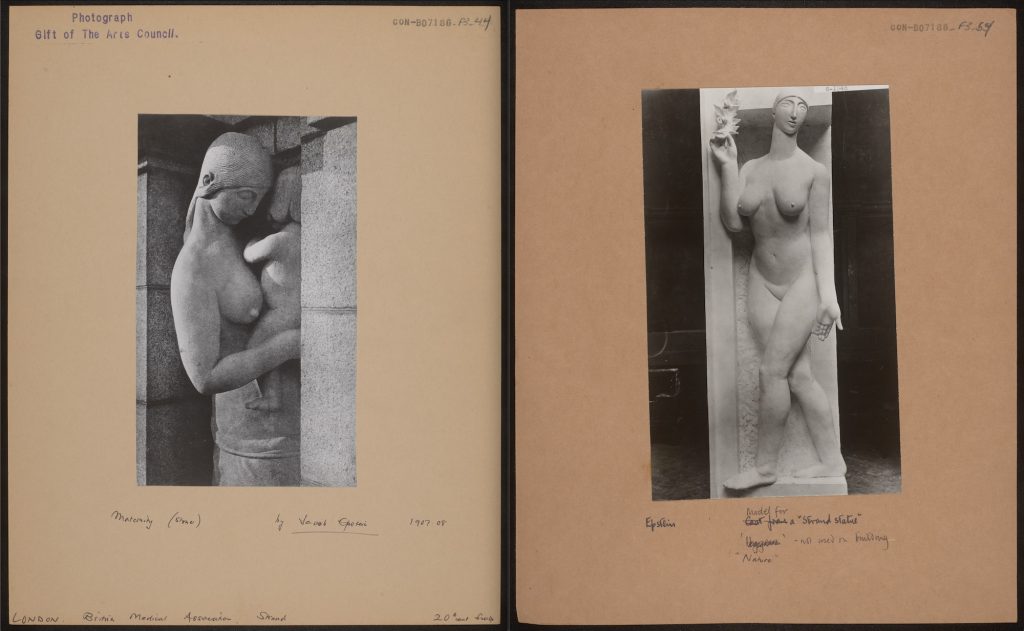
Left: “Maternity” in situ on the Strand (CON_B07186_F003_044). Right: Cast for “Nature” destroyed after rejection by the architects in 1907 (CON_B07186_F003_054). The Courtauld Institute of Art. CC-BY-NC.
We can, however, see the vandalism of the “Strand Statues” as a somewhat pyrrhic victory for Epstein’s critics. Epstein’s now mutilated figures remain in situ in the heart of Central London, a powerful visual manifestation of the historic constraints placed on artistic freedom whilst also a reminder that a work of art should be understood beyond the aesthetic value attached to it in its initial finished form.
The photographs in the Courtauld archives also reveal the subsequent story of the fragments removed in 1937 and the efforts of individuals to ensure that they remained an important part of the narrative surrounding the impact of contemporary sensibilities on artistic practice. Several of the photographs are of fragments following their removal from the Strand site and after an extensive cleaning programme at the National Gallery of Canada in 1961. These fragments now exist in an international museum in which their stories can be told to a global audience.
Leonora Monson
Courtauld Connects Digitisation Oxford Micro-Internship Participant
Read the full post on the Courtauld Digitisation Project Blog.

